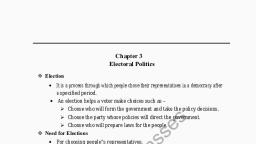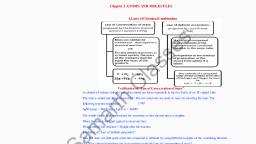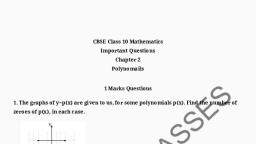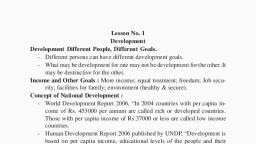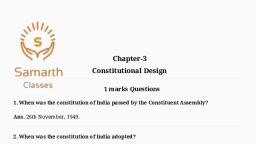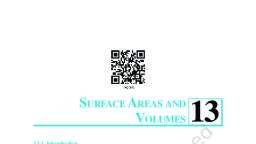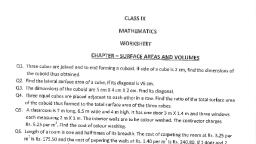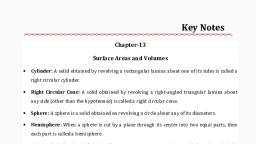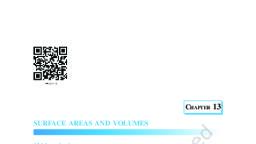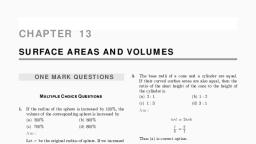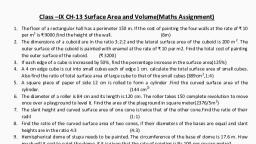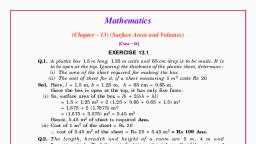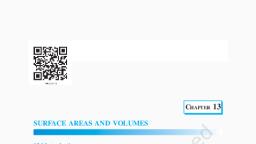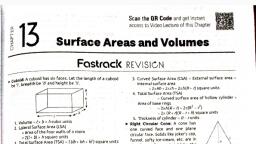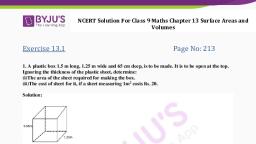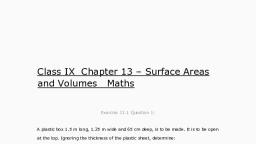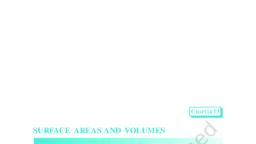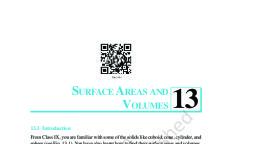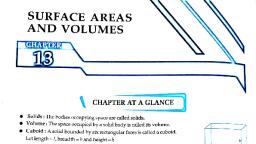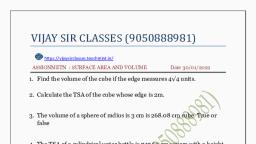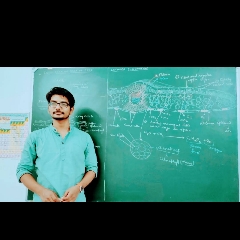Page 1 :
Surface Areas and Volumes, Surface Areas of Cubes and Cuboids, Surface Areas of a Cube and a Cuboid, We give gifts to our friends and relatives at one time or another. We usually wrap our gifts, in nice and colourful wrapping papers. Look, for example, at the nicely wrapped and tied, gift shown below., , Clearly, the gift is packed in box that is cubical or shaped like a cube. Suppose you have a, gift packed in a similar box. How would you determine the amount of wrapping paper, needed to wrap the gift? You could do so by making an estimate of the surface area of the, box. In this case, the total area of all the faces of the box will tell us the area of the wrapping, paper needed to cover the box., Knowledge of surface areas of the different solid figures proves useful in many real-life, situations where we have to deal with them. In this lesson, we will learn the formulae for, the surface areas of a cube and a cuboid. We will also solve some examples using these, formulae., Did You Know?, , , , The word ‘cuboid’ is made up of ‘cube’ and ‘-oid’ (which means ‘similar to’). So, a cuboid, indicates something that is similar to a cube., A cuboid is also called a ‘rectangular prism’ or a ‘rectangular parallelepiped’., Formulae for the Surface Area of a Cuboid, Consider a cuboid of length l, breadth b and height h.
Page 2 :
The formulae for the surface area of this cuboid are given as follows:, Lateral surface area of the cuboid = 2h (l + b), Total surface area of the cuboid = 2 (lb + bh + hl), Here, lateral surface area refers to the area of the solid excluding the areas of its top and, bottom surfaces, i.e., the areas of only its four standing faces are included. Total surface, area refers to the sum of the areas of all the faces., Did You Know?, Two mathematicians named Henri Lebesgue and Hermann Minkowski sought the, definition of surface area at around the twentieth century., Know Your Scientist, Henri Lebesgue (1875−1941) was a French mathematician who is, famous for his theory of integration. His contribution is one of the, major achievements of modern analysis which greatly expands the, scope of Fourier analysis. He also made important contributions to, topology, the potential theory, the Dirichlet problem, the calculus of, variations, the set theory, the theory of surface area and the dimension, theory.
Page 3 :
Hermann Minkowski (1864−1909) was a Polish mathematician who developed the, geometry of numbers and made important contributions to the number theory,, mathematical physics and the theory of relativity. His idea of combining time with the three, dimensions of space, laid the mathematical foundations for Albert Einstein’s theory of, relativity., Did You Know?, The concept of surface area is widely used in chemical kinetics, regulation of digestion,, regulation of body temperature, etc., Formulae for the Surface Area of a Cube, Consider a cube with edge a., , The formulae for the surface area of this cube are given as follows:, Lateral surface area of the cube = 4a2, Total surface area of the cube = 6a2, Here, lateral surface area refers to the area of the solid excluding the areas of its top and, bottom surfaces, i.e., the areas of only its four standing faces are included. Total surface, area refers to the sum of the areas of all the faces., Did You Know?, , , , A cube can have 11 different nets., Cubes and cuboids are convex polygons that satisfy Euler’s formula, i.e., F + V − E = 2., Know More, Length of the diagonal in a cube and in a cuboid, A cuboid has four diagonals (say AE, BF, CG and DH). The four diagonals are equal in length.
Page 4 :
Let us consider the diagonal AE., , In rectangle ABCD, length of diagonal AC =, Now, ACEG is a rectangle with length AC and breadth CE or h., So, length of diagonal AE =, , ∴ Length of the diagonal of a cuboid =, A cube is a particular case of cuboid in which the length, breadth and height are equal to a., ∴ Length of the diagonal of a cube =, Solved Examples, Easy, Example 1: There are twenty-five cuboid-shaped pillars in a building, each of, dimensions 1 m ×1 m × 10 m. Find the cost of plastering the surface of all the pillars, at the rate of Rs 16 per m2., Solution:, Length (l) of one pillar = 1 m, Breadth (b) of one pillar = 1 m, Height (h) of one pillar = 10 m
Page 5 :
∴ Lateral surface area of one pillar= 2h (l + b), = 2 × 10 × (1 + 1) m2, = 40 m2, ⇒ Lateral surface area of twenty-five pillars = (25 × 40) m2 = 1000 m2, Cost of plastering 1 m2 of surface = Rs 16, ⇒ Cost of plastering 1000 m2 of surface = Rs (16 × 1000) = Rs 16000, Thus, the cost of plastering the twenty-five pillars of the building is Rs 16000., Example 2: Find the length of the diagonal of a cube whose surface area is 294 m2., Solution:, Let the edge of the given cube be a., ∴ Surface area of the cube = 6a2, It is given that the surface area of the cube is 294 m2., So, 6a2 = 294, , Now, length of the diagonal of the cube =, Medium, Example 1: A metallic container (open at the top) is a cuboid of dimensions 7 cm × 5, cm × 8 cm. What amount of metal sheet went into making the container? Also, find, the cost required for painting the outside of the container, excluding the base, at the, rate of Rs 17 per 3 cm2., Solution:, Length (l) of the container = 7 cm, Breadth (b) of the container = 5 cm
Page 6 :
Height (h) of the container = 8 cm, The container is open at the top. Therefore, while calculating the amount of metal sheet, used, we will exclude the top part., ∴ Amount of metal sheet used = Total surface area − Area of the top part, = 2 (lb + bh + lh) − lb, = [2 × (7 × 5 + 5 × 8 + 7 × 8) − 7 × 5] cm2, = [2 × (35 + 40 + 56) − 35] cm2, = (2 × 131 − 35) cm2, = 227 cm2, Thus, 227 cm2 of metal went into making the given container., Now, area to be painted = Lateral surface area of the cuboid, = 2h (l + b), = [2 × 8 × (7 + 5)] cm2, = (16 × 12) cm2, = 192 cm2, Cost of painting 3 cm2 of surface = Rs 17, , ⇒ Cost of painting 1 cm2 of surface = Rs, , ⇒ Cost of painting 192 cm2 of surface =, , = Rs 1088, , Therefore, the cost of painting the outside of the container is Rs 1088., Example 2: If the total surface area of a cube is 24x2, then find the surface area of the, cuboid formed by joining, i)two such cubes.
Page 8 :
Length (l) of the cuboid = 2x + 2x + 2x = 6x, Breadth (b) of the cuboid = 2x, Height (h) of the cuboid = 2x, ∴ Surface area of the cuboid = 2 (lb + bh + lh), = 2 × (6x × 2x + 2x × 2x + 6x × 2x), = 2 × (12x2 + 4x2 + 12x2), = 56x2, Thus, the surface area of the cuboid formed according to the given specifications is 56x2., Hard, Example 1: The cost of flooring a twenty-metre-long room at Rs 5 per square metre, is Rs 1000. If the cost of painting the four walls of the room at Rs 15 per square metre, is Rs 1800, then find the height of the room., Solution: The length (l) of the room is given as 20 m. Let b and h be its breadth and height, respectively., Area of the floor = l × b, Cost of flooring at Rs 5 per m2 = Rs 1000, So, 5 × l × b = 1000
Page 9 :
Area of the four walls = 2 (bh + lh), Cost of painting the four walls at Rs 15 per m2 = Rs 1800, So, 15 × [2 (bh + lh)] = 1800, ⇒ 15 × [2 × (10 × h + 20 × h)] = 1800, , Thus, the height of the room is 2 m., Example 2: The internal measures of a cuboidal room are 20 m × 15 m × 12 m., Dinesh wants to paint the four walls of the room with orange colour and the roof of, the room with white colour. 100 m2 of surface can be painted using each can of, orange paint and 125 m2 of surface can be painted using each can of white paint. How, many cans of each colour will be required? If the orange and white paints are, available at Rs 250 per can and Rs 300 per can respectively, then how much money, will be spent by Dinesh to paint the room?, Solution: Length (l) of the room = 20 m, Breadth (b) of the room = 15 m, Height (h) of the room = 12 m, Area of the room to be painted using orange colour= Area of the four walls of the room, = Lateral surface area of the room, = 2h (l + b), = [2 × 12 (20 + 15)] m2, = (24 × 35) m2, = 840 m2, It is given that 100 m2 of surface can be painted using each can of orange paint.
Page 10 :
∴ Number of cans of orange paint required, , = 8.4, = 9 (∵ 8 cans will be insufficient for the job), Thus, 9 cans of orange paint will be required for painting the four walls of the room., Area of the room to be painted using white colour= Area of the roof, =l×b, = (20 × 15) m2, = 300 m2, It is given that 125 m2 of surface can be painted using each can of white paint., , ∴ Number of cans of white paint required, , = 2.4, = 3 (∵ 2 cans will be insufficient for the job), Thus, 3 cans of white paint will be required for painting the roof of the room., Cost of each can of orange paint = Rs 250, ⇒ Cost of 9 cans of orange paint = 9 × Rs 250 = Rs 2250, Cost of each can of white paint = Rs 300, ⇒ Cost of 3 cans of white paint = 3 × Rs 300 = Rs 900, Thus, total money that will be spent in painting the room = Rs 2250 + Rs 900 = Rs 3150
Page 11 :
Surface Area of Right Circular Cylinders, Surface Area of a Right Circular Cylinder, We come across many objects in our surroundings which are cylindrical, i.e., shaped like, a cylinder, for example, pillars, rollers, water pipes, tube lights, cold-drink cans and LPG, cylinders. This three-dimensional figure is found almost everywhere., We can easily make cylindrical containers using metal sheets of any length and breadth., Say we have to make an open metallic cylinder (as shown below) of radius 14 cm and, height 40 cm. How will we calculate the dimensions of the metal required for making this, specific cylinder?, , We will do so by calculating the surface area of the required cylinder. This surface area will, be equal to the area of metal sheet required to make the cylinder., Knowledge of surface areas of three-dimensional figures is important in finding solutions, to several real-life problems involving them. In this lesson, we will learn the formulae for, the surface area of a right circular cylinder. We will also solve examples using these, formulae., Features of a right circular cylinder, 1. A right circular cylinder has two plane surfaces circular in shape., 2. The curved surface joining the plane surfaces is the lateral surface of the cylinder., 3. The two circular planes are parallel to each other and also congruent., 4. The line joining the centers of the circular planes is the axis of the cylinder., 5. All the points on the lateral surface of the right circular cylinder are equidistant from the, axis., 6. Radius of circular plane is the radius of the cylinder., Two types of cylinders are given below., 1. Hollow cylinder: It is formed by the lateral surface only. Example: A pipe
Page 12 :
2. Solid cylinder: It is the region bounded by two circular plane surfaces with the lateral, surface. Example: A garden roller, , Formulae for the Surface Area of a Right Circular Cylinder, Consider a cylinder with base radius r and height h., , The formulae for the surface area of this cylinder are given as follows:, Curved surface area of the cylinder = 2πrh, Area of two circular faces of cylinder = 2πr2, Total surface area of the cylinder = 2πr (r + h)
Page 13 :
Note: We take π as a constant and its value as, , or 3.14., , Here, curved (or lateral) surface area refers to the area of the curved surface excluding the, top and bottom surfaces. Total surface area refers to the sum of the areas of the top and, bottom surfaces and the area of the curved surface., Did You Know?, Pi, , , , , , , , , Pi is a mathematical constant which is equal to the ratio of the circumference of a circle to, its diameter., It is an irrational number represented by the Greek letter ‘π’ and its value is approximately, equal to 3.14159., William Jones (1706) was the first to use the Greek letter to represent this number., Pi is also called ‘Archimedes’ constant’ or ‘Ludolph’s constant’., Pi is a ‘transcendental number’, which means that it is not the solution of any finite, polynomial with whole numbers as coefficients., Suppose a circle fits exactly inside a square; then, pi =, Know Your Scientist, William Jones (1675−1749) was a Welsh mathematician who is, primarily known for his proposal to use the Greek letter ‘π’ for, representing the ratio of the circumference of a circle to its, diameter. His book Synopsis Palmariorum Matheseos includes, theorems on differential calculus and infinite series. In this, book, π is used as an abbreviation for perimeter., , Whiz Kid, There are many types of cylinders—right circular cylinder (whose base is circular), elliptic, cylinder (whose base is an ellipsis or oval), parabolic cylinder, hyperbolic cylinder,, imaginary elliptic cylinder, oblique cylinder (whose top and bottom surfaces are displaced, from each other), etc.
Page 14 :
Formulae for the Surface Area of a Right Circular Hollow Cylinder, Consider a hollow cylinder of height h with external and internal radii R and r respectively,, , Here, curved surface area, CSA = External surface area + Internal surface area
Page 15 :
Here, thickness of the hollow cylinder = R − r., Solved Examples, Easy, Example 1: The curved surface area of a right circular cylinder of height 7 cm is 44, cm2. Find the diameter of the base of the cylinder., Solution:, Let r be the radius and h be the height of the cylinder., It is given that:, h = 7 cm, Curved surface area of the cylinder = 44 cm2, So, 2πrh = 44 cm2, , Thus, diameter of the base of the cylinder = 2r = 2 cm, Example 2: The radii of two right circular cylinders are in the ratio 4 : 5 and their, heights are in the ratio 3 : 1. What is the ratio of their curved surface areas?, Solution:, Let the radii of the cylinders be 4r and 5r and their heights be 3h and h.
Page 16 :
Let S1 be the curved surface area of the cylinder of radius 4r and height 3h., ∴ S1 = 2π × 4r × 3h = 24πrh, Let S2 be the curved surface area of the cylinder of radius 5r and height h., ∴ S2 = 2π × 5r × h = 10πrh, Now,, , Thus, the curved surface areas of the two cylinders are in the ratio 12 : 5., , Medium, Example 1: Find the height and curved surface area of a cylinder whose radius is 14, dm and total surface area is 1760 dm2., Solution:, Radius (r) of the cylinder = 14 dm, Let the height of the cylinder be h., Total surface area of the cylinder = 1760 dm2, So, 2πr (r + h) = 1760 dm2, , Thus, the height of the cylinder is 6 dm., Now, curved surface area of the cylinder = 2πrh
Page 17 :
Example 2: There are ten identical cylindrical pillars in a building. If the radius of, each pillar is 35 cm and the height is 12 m, then find the cost of plastering the surface, of all the pillars at the rate of Rs 15 per m2., Solution:, , Radius (r) of one pillar, Height (h) of one pillar = 12 m, ∴ Curved surface area of one pillar = 2πrh, , ⇒ Curved surface area of ten pillars = 10 × 26.4 m2 = 264 m2, Cost of plastering 1 m2 of surface = Rs 15, ⇒ Cost of plastering 264 m2 of surface = Rs (15 × 264) = Rs 3960, Therefore, the cost of plastering the ten pillars of the building is Rs 3960., Hard, Example 1: A cylindrical road roller is of diameter 175 cm and length 1.5 m. It has to, cover an area of 0.33 hectare on the ground. How many complete revolutions must, the roller take to cover the ground? (1 hectare = 10000 m2), , Solution: Diameter of the cylindrical roller, , ∴ Radius (r) of the cylindrical roller =, , m, , Length (h) of the cylindrical roller = 1.5 m
Page 18 :
Area covered by the roller in one complete revolution = Curved surface area of the roller, = 2πrh, , Area of the ground to be covered = 0.33 hectare = 0.33 × 10000 m2 = 3300 m2, , ∴ Number of complete revolutions, , Thus, the roller must take 400 complete revolutions to cover the ground., Example 2: The internal diameter, thickness and height of a hollow cylinder are 20, cm, 1 cm and 25 cm respectively. What is the total surface area of the cylinder?, Solution: Internal diameter of the cylinder = 20 cm, , ∴ Internal radius (r) of the cylinder, Thickness of the cylinder = 1 cm, ∴ External radius (R) of the cylinder = (10 + 1) cm = 11 cm, Height (h) of the cylinder = 25 cm, Internal curved surface area of the cylinder = 2πrh, , External curved surface area of the cylinder = 2πRh
Page 19 :
The two bases of the cylinder are ring-shaped. Therefore, their area is given as follows:, Area of base = π (R2 − r2), , So, total surface area of the cylinder = Internal CSA + External CSA + 2 × Area of base, , Surface Areas of Cones, Surface Area of a Right Circular Cone, Traffic cones, conical tents, party hats, ice cream cones are some examples of objects, shaped like a cone. The knowledge of the surface area of a cone is essential in the, manufacture of such conical objects. Take, for example, the following case., X Ltd. is a company that organizes adventures trips. It has a contract with Y Ltd., a company, that manufactures tents. Y Ltd. uses canvas to make the specific conical tents ordered by X, Ltd. Now, the area of canvas required to make one such conical tent is exactly equal to the, surface area of the conical tent. Thus, Y Ltd is able to order the required amount of canvas, from the market to prepare the tents according to the specifications.
Page 20 :
This is just one of the many examples from real life involving the concept of surface area. In, this lesson, we will learn the formulae for the surface area of a right circular cone. We will, also apply the formulae in solving a few examples., , Formulae for the Surface Area of a Right Circular Cone, , Consider a cone with a base radius r, height h and slant height l., , The fixed point V is the vertex of the cone and the fixed line VO is the axis of the cone., The length of line segment joining the vertex to the centre O of the base is called the height, of the base and the length of the line segment joining the vertex to any point on the, circular edge of the base is called the slant height of the cone., The relation between the height, radius and slant height of the cone is: l2 = r2 + h2., The formulae for the surface area of the given cone are given as follows:
Page 21 :
Curved surface area of the cone = πrl, Total surface area of the cone = πr (l + r), Here, curved (or lateral) surface area refers to the area of the curved surface excluding the, base, and total surface area refers to the sum of the area of the base and the area of the, curved surface., Did You Know?, A cone is the shape obtained by rotating a right triangle around one of its two shorter sides., , Did You Know?, A cone is a three-dimensional geometric figure that does not have uniform or congruent, cross-sections., , Largest Cone Cut Out from a Cylinder, Solved Examples, Easy, Example 1: The curved surface area of a cone is 1914 cm2 and its base radius is 21, cm. Find, i)the slant height of the cone., ii)the total surface area of the cone., Solution:, i)Radius (r) of the cone = 21 cm, Curved surface area of the cone = 1914 cm2, Let the slant height of the cone be l., ∴ πrl = 1914 cm2
Page 22 :
Thus, the slant height of the cone is 29 cm., ii)Total surface area of the cone = πr (l + r), , Example 2: The total surface area of a cone is 33264 cm2 and its base radius and, slant height are in the ratio 3 : 5. Find the slant height of the cone., Solution: Let the radius and slant height of the cone be 3x and 5x respectively., Total surface area of the cone = 33264 cm2, , So, slant height of the cone = 5x = 5 × 21 cm = 105 cm, Medium, Example 1: The height and radius of the base of a conical tomb are 8 m and 6 m, respectively. Find the cost of whitewashing the outer surface of the tomb at the rate, of Rs 2000 per 50 m2.
Page 23 :
Solution:, Radius (r) of the conical tomb = 6 m, Height (h) of the base of the conical tomb = 8 m, Let the slant height of the conical tomb be l., We know that l2 = r2 + h2, , ⇒l2 = (62 + 82) m2, ⇒l2 = (36 + 64) m2, ⇒l2 = 100 m2, , ∴ Curved surface area of the conical tomb = πrl, , Cost of whitewashing 50 m2 of surface = Rs 2000, , ⇒ Cost of whitewashing 1 m2 of surface =, ⇒ Cost of whitewashing 188.57 m2 of surface = 188.57 Rs 40 = Rs 7542.80, Thus, the cost of whitewashing the outer surface of the tomb is Rs 7542.80., Example 2: A corncob (which is shaped like a cone) is of length 30 cm and the radius, of its broadest end is 4 cm. If about 5 grains are present per square centimetre of the, cob, then approximately how many grains are there on the entire cob?
Page 24 :
Solution:, Total grains on the cob = Curved surface area of the cob × Number of grains per cm2, Radius (r) of the cob = 4 cm, Height (h) of the base of the cob = 30 cm, Let the slant height of the cob be l., We know that l2 = r2 + h2, ⇒ l2 = (42 + 302) cm2, ⇒ l2 = (16 + 900) cm2, ⇒ l2 = 916 cm2, , Curved surface area of the cob = πrl, , Total number of grains = 380.4 × 5 = 1902, Thus, there are about 1902 grains on the entire cob., Hard
Page 25 :
Example 1: A cone and a cylinder have the same radius and height. If the ratio of the, radius to height is 5 : 12, then find the ratio of the curved surface area of the cone to, that of the cylinder., Solution:, The cylinder and the cone have the same radius and height. Let r be this radius and h be the, height., It is given that:, , ⇒ r = 5x and h = 12x, where x is any constant, Slant height (l) of the cone, , Hence, the curved surface areas of the cone and the cylinder are in the ratio 13 : 24., Example 2: A cylindrical tent of height 2 m and radius 28 m is surmounted by a right, circular cone. If the total height of the tent is 14 m and the cost of papering is Rs 3 per, square metre, then calculate the total money spent in papering the inner side of the, tent., Solution:
Page 26 :
Radius (r) of the cylindrical part = 28 m, Height (h) of the cylindrical part = 2 m, ∴ Curved surface area of the cylindrical part = 2πrh, , Radius of the base of the conical part = Radius of the cylindrical part = 28 m, Let H and l be respectively the height and slant height of the conical part., H = (14 − 2) m = 12 m (∵ Total height of the tent = 14 m), We know that l 2 = r 2 + H 2, , ⇒l 2 = (282 + 122) m2, ⇒ l 2 = (784 + 144) m2, ⇒ l 2 = 928 m2, , ∴ Curved surface area of the conical part = πrl
Page 27 :
Total surface area = Sum of the curved surface areas of the cylindrical and conical parts, = (352 + 2680.48) m2, = 3032.48 m2, Cost of papering 1 m2 of surface = Rs 3, ⇒ Cost of papering 3032.48 m2 of surface = Rs 3 × 3032.48 = Rs 9097.44, Thus, the total money spent in papering the inner side of the tent is Rs 9097.44., Surface Areas of Sphere and Hemisphere, Surface Areas of a Sphere and a Hemisphere, What images come to your mind when the word ‘sphere’ is mentioned? The light hollow, ball used in table tennis, the leather ball used in cricket, the inflatable balls used in the, games of football and basketball and the heavy metallic shots used for shot-putting are all, examples of the perfectly round three-dimensional shape called sphere. Now, if you were to, cut each of the objects mentioned above along its diameter, then you would obtain the, three-dimensional figure called hemisphere. As its name indicates, a hemisphere is the half, of a sphere. Any sphere when cut along the diameter yields two equal hemispheres., A sphere has only a curved surface; so, in its case, the total surface area is the same as the, area of its curved surface. This, however, is not the case with a hemisphere. Consider the, whole watermelon and the half of the same shown below., , Clearly, the whole watermelon has only a curved exterior, but what about its half? Observe, how the half of the watermelon has both a curved exterior and a flat surface. So, in case of a, hemisphere the total surface area is different from the area of its curved surface., Sphere and hemisphere, A sphere is a solid described by the rotation of a semi-circle about a fixed diameter.
Page 28 :
Properties of a sphere:, 1. A sphere has a centre., 2. All the points on the surface of the sphere are equidistant from the centre., 3. The distance between the centre and any point on the surface of the sphere is the radius of, the sphere., Hemisphere:A plane through the centre of the sphere divides it into two equal parts each, is called a hemisphere., , In this lesson, we will learn the formulae for the surface areas of a sphere and a, hemisphere. We will also solve problems using the same., Formula for the Surface Area of a Sphere, Consider a sphere of radius r.
Page 29 :
The formula for the surface area (curved or total) of this sphere is given as follows:, Surface area of a sphere = 4πr2, As mentioned before, the total surface area of a sphere is the same as its curved surface, area since a sphere has only a curved surface., Did You Know?, Among all geometric shapes, a sphere has the smallest surface area for a given volume., Take, for example, bubbles and water droplets. Their spherical shape enables them to hold, as much air as possible with the least surface area., Solved Examples, Easy, Example 1: What is the radius of a globe whose surface area is 1256 cm2? (Use π =, 3.14), Solution: Let the radius of the globe be r., Surface area of a sphere = 4πr2, It is given that the surface area of the globe is 1256 cm2., So, 4πr2 = 1256 cm2, ⇒ 4 × 3.14 × r2 = 1256 cm2, ⇒ 12.56 × r2 = 1256 cm2, , Thus, the radius of the globe is 10 cm., Medium, Example 1: Find the surface area of the largest sphere that can be inscribed in a cube, of edge 21 cm.
Page 30 :
Solution: Edge of the cube = 21 cm, Suppose the largest sphere that can be inscribed in this cube has a radius r., , This sphere will touch all the six walls of the cube. Therefore, the diameter of the sphere, will be equal to the edge of the cube., So, 2r = 21 cm, , Now, surface area of the required sphere = 4πr2, , Example 2: The diameter of a football is approximately, volleyball. What is the ratio of their surface areas?, Solution: Let the diameter of the volleyball be x., , ∴ Diameter of the football =, , Now, radius (r1) of the volleyball, , Radius (r2) of the football, , times the diameter of a
Page 31 :
Required ratio, , Thus, the surface areas of the football and the volleyball are in the ratio 400 : 361., Hard, Example 1: If the diameter of a sphere is increased by 25%, then what will be the, percentage increase in its curved surface area?, Solution: Let r be the radius and S be the curved surface area of the sphere., , Percentage increase in diameter = 25, , ∴ Increase in diameter = 25% of 2r =, , ⇒ Increased diameter =, , ∴ Increased radius =, Let S ' be the new curved surface area of the sphere.
Page 32 :
Now, increase in curved surface area, , ∴ Percentage increase in curved surface area, , Thus, the curved surface area of the sphere will increase by 56.25%., Formulae for the Surface Area of a Hemisphere, A hemisphere is a three dimensional solid having two faces, one edge and no vertex., Since a hemisphere is obtained by cutting a sphere along its diameter, the radius of a, hemisphere is the same as that of the sphere from which it is cut., Consider a hemisphere with radius r., , The formulae for the surface area of this hemisphere are given as follows:, Curved surface area of the hemisphere = 2πr2, Total surface area of the hemisphere = 3πr2
Page 33 :
Here, curved (or lateral) surface area refers to the area of the curved surface excluding the, area of the top surface, and total surface area refers to the sum of the area of the curved, surface and the area of the top surface., , Formula for the Surface Area of a Hollow Hemisphere Sphere, Let R and r be the outer and inner radii of the hollow hemisphere., , Here, curved surface area = Outer surface area + Inner surface area, , Solved Examples, Easy, Example 1: If the total surface area of a hemisphere is 462 cm2, then find its radius., Solution: Let the radius of the hemisphere be r., Total surface area of the hemisphere is given by the formula 3πr2., It is given that the total surface area of the hemisphere is 462 cm2., So, 462 cm2 = 3πr2
Page 34 :
Thus, the radius of the hemisphere is 7 cm., Medium, Example 1: A hemispherical steel bowl is 0.25 cm thick. The outer diameter of the, bowl is 11 cm. Calculate the cost of tin-plating the inner surface of the bowl at the, rate of Rs 16 per, 100 cm2., Solution: The figure according to the given specifications can be made as follows:, , Outer diameter of the hemispherical bowl = 11 cm, , ∴ Outer radius of the hemispherical bowl =, Thickness of the hemispherical bowl = 0.25 cm, ∴ Inner radius (r) of the hemispherical bowl = (5.5 − 0.25) cm = 5.25 cm, Inner curved surface area of the hemispherical bowl = 2πr2
Page 35 :
Cost of tin-plating 100 cm2 of surface = Rs 16, , ∴ Cost of tin-plating 1 cm2 of surface =, , ⇒ Cost of tin-plating 173.25 cm2 of surface =, Thus, the cost of tin-plating the inner surface of the hemispherical bowl is Rs 27.80., Hard, Example 1: A toy is in the shape of a right circular cylinder with a hemisphere at one, end and a cone at the other. The height and radius of the cylindrical part are 13 cm, and 5 cm respectively. Calculate the curved surface area of the toy if the height of the, conical part is 12 cm., Solution: The figure according to the given specifications can be made as follows:, , Radius (r) of the cylinder = 5 cm, Height (H) of the cylinder = 13 cm, Height (h) of cone = 12 cm, Radii of the cone and the hemisphere = Radius of the cylinder = 5 cm, Now, slant height (l) of the cone
Page 36 :
∴ Surface area of the toy = CSA of the hemisphere + CSA of the cylinder + CSA of the cone, , Thus, the curved surface area of the toy is 770 cm2., Volumes of Cubes and Cuboids, Volumes of a Cube and a Cuboid, Abhinav’s mother gives him a container, asking him to go to the neighbouring milk booth, and buy 2.5 L of milk. What does ‘2.5 L’represent? It represents the amount of milk that, Abhinav needs to buy. In other words, it is the volume of milk that is to be bought., , After buying the milk, Abhinav notices that the container is full up to its brim. He says to, himself, ‘This container has no capacity to hold any more milk.’ What does the word, ‘capacity’ indicate? The space occupied by a substance is called its volume. The, capacity of a container is the volume of a substance that can fill the container, completely. In this case, the volume and the capacity of the container are the same. The, standard units which are used to measure the volume are cm3 (cubic, centimetre) and m3 (cubic metre).
Page 37 :
In this lesson, we will learn the formulae for the volumes or capacities of cubic and, cuboidal objects. We will also solve examples using these formulae., Did You Know?, A cube is one among the five platonic solids. This means that it is a regular and convex, polyhedron with the same number of faces meeting at each vertex., Formulae for the Volumes of a Cube and a Cuboid, , Consider a cube with an edge a., , The formula for the volume of this cube is given as follows:, Volume of the cube = a3, Now, consider a cuboid with length l, breadth b and height h., , The formula for the volume of this cuboid is given as follows:, Volume of the cuboid = l × b × h, Concept Builder, The units of capacity and volume are interrelated as follows:, , , , 1 cm3 = 1 mL, 1000 cm3 = 1 L
Page 38 :
, , 1 m3 = 1 kL = 1000 L, Did You Know?, , , , , A cube has the maximum volume among all cuboids with equal surface area., A cube has the minimum surface area among all cuboids with equal volume., Solved Examples, Easy, Example 1: Find the volumes of cubes of given sides., (a) 2 cm (b) 5 m (c) 12 cm (d) 15 m, Solution: (a), Measure of side of cube = 2 cm, Volume of cube = (Side)3 = 23 cm3 = 8 cm3, (b), Measure of side of cube = 5 m, Volume of cube = (Side)3 = 53 m3 = 125 m3, (c), Measure of side of cube = 12 cm, Volume of cube = (Side)3 = 123 cm3 = 1728 cm3, (d), Measure of side of cube = 15 m, Volume of cube = (Side)3 = 153 m3 = 3375 m3, Example 2: Find the volumes of cuboids of given dimensions., (a) length = 5 cm, breadth = 2 cm, height = 6 cm, (b) length = 15 cm, breadth = 10 cm, height = 30 cm
Page 39 :
(c) length = 1 m, breadth = 0.5 m, height = 1.5 m, Solution: (a), We have, length = 5 cm, breadth = 2 cm, height = 6 cm, ∴ Volume of cuboid = length × breadth × height, = (5 × 2 × 6) cm3, = 60 cm3, (b), We have, length = 15 cm, breadth = 10 cm, height = 30 cm, ∴ Volume of cuboid = length × breadth × height, = (15 × 10 × 30) cm3, = 4500 cm3, (c), We have, length = 1 m, breadth = 0.5 m, height = 1.5 m, ∴ Volume of cuboid = length × breadth × height, = (1 × 0.5 × 1.5) m3, = 0.75 m3, Example 3: If a cubical tank can contain 1331000 L of water, then find the edge of the, tank., Solution: Capacity of the cubical tank = 1331000 L, = 1331 m3 (∵ 1000 L = 1 m3)
Page 40 :
Now, capacity of the tank = Volume of water that can be contained in the tank, We know that volume of water in the tank = (Edge)3, ⇒ (Edge)3 = 1331 m3, ⇒ ∴ Edge = 11 m, Thus, the edge of the cubical tank is 11 m., Example 4: Find the height of the cuboid whose volume is 840 cm3and the area of, whose base is, 120 cm2., Solution: Let the length, breadth and height of the cuboid be l, b and h respectively., Area of the base of the cuboid = 120 cm2, ∴ l × b = 120 cm2, Volume of the cuboid = 840 cm3, ∴ l × b × h = 840 cm3, ⇒ 120 cm2 × h = 840 cm3 (∵ l × b = 120 cm2), , Thus, the height of the cuboid is 7 cm., Example 5: If the ratio of the edges of two cubes is 2 : 5, then find the ratio of their, volumes., Solution: Let the edges of the cubes be a = 2x and b = 5x., , Ratio of the volumes of the cubes
Page 41 :
Thus, the volumes of the cubes are in the ratio 8 : 125., Medium, Example 1: A solid cube of edge 18 cm is cut into eight cubes of equal volume. Find, the dimension of each new cube. Also find the ratio of the total surface area of the, bigger cube to that of the new cubes formed., Solution: Let the edge of each new cube be x., According to the question, we have:, Volumes of 8 cubes each of edge x = Volume of cube of edge 18 cm, , Thus, the edge of each new cube is 9 cm., Total surface area (S1) of the bigger cube = 6 × (18 cm)2, Total surface area of 8 cubes (S2) each of edge 9 cm = 8 × [6 × (9 cm)2], , Hence, the required ratio is 1 : 2.
Page 42 :
Example 2: A hostel having strength of 300 students requires on an average 36000 L, of water per day. It has a tank measuring 10 m × 8 m × 9 m. For how many days will, the water in the tank filled to capacity last?, Solution: Let the cuboidal tank have length l, breadth b and height h., It is given that l = 10 m, b = 8 m and h = 9 m., Capacity of the tank = l × b × h = 10 m × 8 m × 9 m = 720 m3, ∴ Amount of water in the tank filled to capacity = 720 m3 = 720000 L (∵ 1000 L = 1 m3), Amount of water used by 300 students in 1 day = 36000 L, Number of days for which the water in the full tank will, last, , Thus, the water in the tank filled to capacity will last for 20 days., Example 3: The dimensions of a wall in a godown are 25 m × 0.3 m × 10 m. How, many bricks of dimensions 25 cm × 10 cm × 5 cm were used to construct the wall?, Solution: Length (L) of the wall = 25 m = (25 × 100) cm = 2500 cm, Breadth (B) of the wall = 0.3 m = (0.3 × 100) cm = 30 cm, Height (H) of the wall = 10 m = (10 × 100) cm = 1000 cm, ∴ Volume of the wall = L × B × H = (2500 × 30 × 1000) cm3, Length (l) of one brick = 25 cm, Breadth (b) of one brick = 10 cm, Height (h) of one brick = 5 cm, ∴ Volume of one brick = l × b × h = (25 × 10 × 5) cm3
Page 43 :
Number of bricks used to construct the wall, , Thus, 60000 bricks of dimensions 25 cm × 10 cm × 5 cm were used to construct the wall., Example 4: A storeroom is in the form of a cuboid with dimensions 90 m × 150 m ×, 120 m. How many cubical boxes of edge 60 dm can be stored in the room?, Solution: Length (l) of the storeroom = 90 m, Breadth (b) of the storeroom = 150 m, Height (h) of the storeroom = 120 m, ∴ Volume of the storeroom = l × b × h = (90 × 150 × 120) m3, , Edge (a) of one cubical box, ∴ Volume of one box = a3 = (6)3 m3, , Number of boxes that can be stored in the room, , Thus, 7500 cubical boxes of edge 60 dm can be stored in the room., Hard, Example 1: A man-made canal is 5 m deep and 60 m wide. The water in the canal, flows at the rate of, 3 km/h. The canal empties its water into a reservoir. How much water will fall into, the reservoir in 10 minutes?, Solution: Depth (h) of the canal = 5 m
Page 44 :
Width (b) of the canal = 60 m, Length (l) of the canal is the rate of water flowing per hour = 3 km = 3000 m, Amount of water flowing per hour = l × b × h = (3000 × 60 × 5) m3 = 900000 m3 = 900000, kL (∵ 1 m3 = 1 kL), ∴ Amount of water flowing in 60 min = 900000 kL, , ⇒ Amount of water flowing in 1 minute, , ⇒ Amount of water flowing in 10 minutes, = 150000 kL, Thus, 150000 kL of water will fall into the reservoir in 10 minutes., Example 2: The external length, breadth and height of a closed rectangular wooden, box are 9 cm, 5 cm and 3 cm respectively. The thickness of the wood used is 0.25 cm., The box weighs 7.5 kg when empty and 50 kg when it is filled with sand. Find the, weights of one cubic cm of wood and one cubic cm of sand., Solution: External length (L) of the wooden box = 9 cm, External breadth (B) of the wooden box = 5 cm, External height (H) of the wooden box = 3 cm, ∴ External volume of the wooden box = L × B × H = (9 × 5 × 3) cm3 = 135 cm3, Thickness of the wood used = 0.25 cm, Internal length (l) of the wooden box = 9 cm − (0.25 cm + 0.25 cm) = 8.5 cm, Internal breadth (b) of the wooden box = 5 cm − (0.25 cm + 0.25 cm) = 4.5 cm, Internal height (h) of the wooden box = 3 cm − (0.25 cm + 0.25 cm) = 2.5 cm, ∴ Internal volume of the wooden box = l × b × h = (8.5 × 4.5 × 2.5) cm3 = 95.625 cm3, Now, volume of the wood = External volume of the box − Internal volume of the box
Page 45 :
= (135 − 95.625) cm3, = 39.375 cm3, Weight of the empty box = 7.5 kg, ⇒ Weight 39.375 cm3 of wood = 7.5 kg, , ∴ Weight of 1 cm3 of wood, Now, volume of sand = Internal volume of the box = 95.625 cm3, Weight of sand = Weight of the box filled with sand − Weight of the empty box, = (50 − 7.5) Kg, = 42.5 Kg, ⇒ Weight of 95.625 cm3 of sand = 42.5 kg, , ∴ Weight of 1 cm3 of sand, Volume of Right Circular Cylinders, Water tanks like the ones shown below are a common enough sight., , Clearly, these tanks are cylindrical or shaped like a cylinder. The choice of this shape for a, water tank (and many other storage containers) is because a cylinder provides a large, volume for a little surface area. Also, this shape can withstand much more pressure than a, cube or a cuboid, which makes it easy to transport. Another example of a cylindrical, storage container is the LPG cylinder.
Page 46 :
The amount of space occupied by a water tank is the same as the volume of the tank. So, to, find the capacity or the amount of space occupied by a tank, we need to find the volume of, the tank. In this lesson, we will learn the formula to calculate the volume of a right circular, cylinder and solve some examples using the same., Did You Know?, LPG tanks are cylinder-shaped so that they can withstand the pressure inside them. If these, tanks were square or rectangular in shape, then an increase in pressure inside them would, cause the tanks to reform themselves so as to gain a rounded shape. This, in turn, could, result in leakage at the corners. Actual LPG tanks are designed to have no corners., Formula for the Volume of a Right Circular Cylinder, Consider a solid cylinder with r as the radius of the circular base and h as the height., , The formula for the volume of this right circular solid cylinder is given as follows:, Volume of the solid cylinder = Area of base × Height, Volume of the solid cylinder = πr2h, , Consider a hollow cylinder with internal and external radii as r and R respectively, and, height as h.
Page 47 :
The formula for the volume of this right circular hollow cylinder is given as follows:, Volume of the hollow cylinder = π (R2 − r2) h, In right prisms, top and base surfaces are congruent and parallel while lateral faces are, perpendicular to the base. Thus, their volumes can also be calculated in the same manner, as that of right cylinders., Volume of the right prism = Area of base × Height, Did You Know?, The volume of a pizza (which is always cylindrical in shape) is hidden in its name itself. If, we take the radius of a pizza to be ‘z’ and its thickness to be ‘a’, then its volume is, ‘pi.z.z.a’., , or, , Solved Examples, Easy, Example 1: A cylindrical tank can hold 11000 L of water. What is the radius of the base of, the tank if its height is 3.5 m?, Solution: Let r be the radius of the base of the cylindrical tank., Height (h) of the tank = 3.5 m, Volume of the tank = 11000 L = 11 m3 (∵ 1000 L = 1 m3), Volume of a cylinder = πr2h, In this case, we have, , r=1m
Page 48 :
Thus, the radius of the base of the cylindrical tank is 1 m., Example 2: What is the height of a cylinder whose volume is 6.16 m3 and the diameter of, whose base is 28 dm?, Solution: Diameter of the base of the cylinder = 28 dm, , ∴ Radius (r) of the base, , Volume of the cylinder = 6.16 m3, , h=1m, Thus, the height of the cylinder is 1 m., Example 3: The external diameter, thickness and length of a cylindrical water pipe are 22, cm, 1 cm, and 8 m respectively. What amount of material went into making this pipe?, Solution:, External diameter of the hollow cylindrical pipe = 22 cm, , ∴ External radius, R =, Thickness of the pipe = 1 cm, ∴ Internal radius, r = (11 − 1) cm = 10 cm
Page 49 :
Length (h) of the pipe = 8 m = (8 × 100) cm = 800 cm (∵ 1 m = 100 cm), ∴ Volume of the material used to make the pipe, , Thus, 52800 cm3 of material was used to make the water pipe., Medium, Example 1: The diameter and height of a solid metallic cylinder are 21 cm and 25 cm, respectively. If the mass of the metal is 8 g per cm3, then find the mass of the cylinder., Solution: Diameter of the cylinder = 21 cm, , ∴ Radius (r) of cylinder =, Height (h) of the cylinder = 25 cm, To find the mass of the metallic cylinder, we have to first find the volume of the cylinder., Volume of the cylinder, , Mass of 1 cm3 of the metal = 8 g, ∴ Mass of 8662.5 cm3 of the metal= (8662.5 × 8) g
Page 50 :
Thus, the mass of the cylinder is 69.3 kg., Example 2: A rectangular sheet of paper is folded to form a cylinder of height 12 cm. If the, length and breadth of the sheet are 44 cm and 12 cm respectively, then find the volume of, the cylinder., Solution: Height (h) of the cylinder = 12 cm, Let r be the radius of the cylinder. We can find this value from the circumference of the, base of the cylinder. As shown in the figure, this circumference is nothing but the length of, the sheet., , So, circumference of the base of the cylinder = 44 cm, , Now, volume of the cylinder, , Hard, Example 1: The inner and outer diameters of a cylindrical iron pipe are 54 cm and 58 cm, respectively and its length is 5 m. What is the mass of the pipe if 1 cm3 of iron has a mass of, 8 g?, Solution: Inner diameter of the hollow cylindrical iron pipe = 54 cm
Page 51 :
∴ Inner radius, r =, Outer diameter of the pipe = 58 cm, , ∴ Outer radius, R =, Length (h) of the pipe = 5 m = (5 × 100) cm = 500 cm, ∴ Volume of the pipe, , Mass of 1 cm3 of iron = 8 g, ∴ Mass of 176000 cm3 of iron = (8 × 176000) g, , Thus, the mass of the hollow cylindrical iron pipe is 1408 kg., Example 2: The internal and external radii of a cylindrical juice can (as shown in the, figure) are 3.5 cm and 4.2 cm respectively. The total height of the can is 7.7 cm. The, thickness of the base (i.e., a solid cylinder) is 0.7 cm. If the mass of the material used in the, can is 3 g per cm3, then find the mass of the can.
Page 52 :
Solution: To find the mass of the juice can, we need to first find its volume., The juice can shown in the figure contains two cylinders. One is a solid cylinder (i.e., the, base of the can) and the other is a hollow cylinder (i.e., the cylindrical part that stands on, the base)., External radius (R) of the hollow cylinder = 4.2 cm, Internal radius (r) of the hollow cylinder = 3.5 cm, Thickness (h) of the base = 0.7 cm (i.e., the height of the solid cylinder), Total height (H) of the juice can = 7.7 cm, ∴ Height (h') of the hollow cylinder = (7.7 − 0.7) cm = 7 cm, Volume of the juice can = Volume of the solid base + Volume of the hollow cylinder on the, base
Page 53 :
Mass of the material per cm3 = 3 g, ∴ Mass of the material used in the container = (3 × 157.388) g, = 472.164 g, Thus, the mass of the juice can is 472.164 g., Example 3: A well 3.5 m in diameter and 20 m deep is dug in a rectangular field of, dimensions 20 m × 14 m. The earth taken out is spread evenly across the field. Find the, level of earth raised in the field., Solution:, Length (l) of the field = 20 m, Breadth (b) of the field = 14 m, Diameter (d) of the well = 3.5 m, , ∴ Radius (r) of the well=, Depth (h) of the well = 20 m, Volume of the dug out earth = πr2h, Now, the area of the field on which the dug out earth is spread is given by the difference, between the area of the entire field and the area of the field covered by the cross-section of, the well., ⇒ l × b − πr2, Let H be the level of earth raised in the field., Volume of earth spread in the field = Volume of the dug out earth
Page 54 :
Therefore, the level of earth in the field is raised by about 0.712 m., Volume of Cone, , Ice creams are loved by one and all. Take a look at the one shown., , Clearly, what is shown above is an ice cream cone, i.e., ice cream inside a crisp conical, wafer. The amount of ice cream present in the cone is equal to the volume of the cone. In, other words, the number of cubic units of ice cream that will exactly fill the cone is the, volume of the cone., In this lesson, we will learn the formula for the volume of a right circular cone and solve, examples using the same., Did You Know?
Page 55 :
A waffle maker named Ernest Hamwi is credited by a few to be the inventor of the ice, cream cone. He is said to have come up with the idea in 1904 to help an ice cream vendor, who had run out of dishes to serve ice cream., Formula for the Volume of a Right Circular Cone, Consider a cone of radius r and height h., , The formula for the volume of this right circular cone is given as follows:, , Volume of the cone =, Using the above formula, we can find the cubic units of ice cream that exactly fill a cone., Let us say the radius and height of an ice cream cone are 3.5 cm and 9 cm respectively., Then,, , Volume of the cone =, Thus, the amount of ice-cream that exactly fills the cone is 115.5 cm3., Did You Know?, For a cone and a cylinder with the same base radius and height, the volume of the cone is, one-third that of the cylinder., Solved Examples, Easy
Page 56 :
Example 1: The height and slant height of a conical funnel are 21 cm and 29 cm, respectively. How many litres of water can the funnel hold?, Solution:, The amount of water that the funnel can hold is equal to the volume of the funnel., Height (h) of the funnel = 21 cm, Slant height (l) of the funnel= 29 cm, Let the radius of the circular base of the funnel be r., Now, l2 = r2 + h2, ⇒ (29 cm)2 = r2 + (21 cm)2, ⇒ 841 cm2 = r2 + 441 cm2, ⇒ r2 = (841 − 441) cm2, ⇒ r2 = 400 cm2, ⇒, , Volume of the funnel, , Thus, the funnel can hold 8.8 L of water., Example 2: If A, B and C are respectively the height, volume and curved surface area of a, cone, then prove that 3B (πA3 + 3B) = C2A2., Solution: It is given that A, B and C are respectively the height, volume and curved surface, area of the cone.
Page 57 :
Let r and l be the radius and slant height of the cone., Now,, , We have to prove 3B (πA3 + 3B) = C2A2. Let us take the LHS of this equation., , Medium, Example 1: The radius and slant height of a cone are in the ratio 3 : 5. If the volume of the, cone is 12936 m3, then find the radius, height and slant height of the cone., Solution: Let the radius (r) and slant height (l) of the cone be 3x and 5x respectively., Let the height of the cone be h., We know that l2 = r2 + h2, ⇒ (5x)2 = (3x)2 + h2, ⇒ h2 = 25x2 − 9x2
Page 58 :
⇒ h2 = 16x2, ⇒ h=, , = 4x, , Volume of a cone =, It is given that the volume of the cone is 12936 m3., , So,, , Now, r = 3x = (3 × 7) m = 21 m, h = 4x = (4 × 7) m = 28 m, l = 5x = (5 × 7) m = 35 m, Thus, the radius, height and slant height of the cone are 21 m, 28 m and 35 m respectively., Example 2: If the radii and heights of two cones are in the ratios 2 : 3 and 5 : 4 respectively,, then find the ratio of the volumes of the cones., Solution: Let r1 and h1 be the radius and height of one cone., Let r2 and h2 be the radius and height of the other cone., It is given that the radii of the cones are in the ratio 2 : 3.
Page 59 :
It is given that the heights of the cones are in the ratio 5 : 4., , Ratio of the volumes of the cones, , Thus, the volumes of the two cones are in the ratio 5 : 9., Hard, Example 1: Find the volume (in terms of π) of the solid figure obtained when a right, triangle with sides 8 cm, 15 cm and 17 cm is revolved about the side, i) 8 cm., ii) 15 cm., Solution: i) The sides of the given right triangle are 8 cm, 15 cm and 17 cm., If this right triangle is revolved about the side 8 cm, then we will obtain a solid figure as is, shown.
Page 60 :
The solid figure so obtained is a cone., The radius (r)and height (h) of the cone are 15 cm and 8 cm respectively., , ∴ Volume of the cone formed, , ii) If the same right triangle is revolved about the side 15 cm, then we will obtain the, following solid figure., , Again, the solid figure so obtained is a cone., The radius (r)and height (h) of the cone are 8 cm and 15 cm respectively., , ∴ Volume of the cone formed
Page 61 :
Example 2: The surface area of a sphere of radius 5 cm is five times the curved surface, area of a cone of radius 4 cm. Find the, i) height of the cone., ii) volume of the cone., Solution:, i) Let r1 be the radius of the sphere and r2 be the radius of the cone., Let h the height and l the slant height of the cone., It is given that r1 = 5 cm and r2 = 4 cm, According to the question, we have:, Surface area of the sphere = 5 × Curved surface area of the cone, , Thus, the height of the cone is 3 cm., , ii) Volume of the cone
Page 62 :
Volumes of Spheres and Hemispheres, Consider the basketball shown., , Clearly, the basketball, (or, for that matter, any ball) is spherical or shaped like a sphere., Being inflatable, a basketball acquires its shape on being filled with air. The amount of air, inside a basketball filled to its capacity helps us ascertain the volume of the ball., In this lesson, we will learn the formulae for the volumes of spheres and hemispheres, and, solve problems using the same., Formula for the Volume of a Sphere, Consider a solid sphere of radius r., , The formula for the volume of this solid sphere is given as follows:, , Volume of the solid sphere =, Using the above formula, we can calculate the amount of air in a basketball filled to its, capacity., Suppose we have a basketball with radius 18 cm. Then,
Page 63 :
Volume of the basketball =, Thus, the amount of air filled inside the basketball is 24438.86 cm3., Solved Examples, Example 1: Find the radius of a sphere if its volume is, , ., , Solution: Volume of a sphere =, , It is given that the volume of the given sphere is, , ., , Let the radius of the given sphere be r., So,, , Thus, the radius of the sphere is 3.5 cm., Medium, Example 1: Find the volume of a sphere if its surface area is 154 cm2., Solution: Surface area of a sphere =, It is given that the surface area of the given sphere is 154 cm2.
Page 64 :
Let the radius of the given sphere be r., So,, , Now, volume of a sphere =, , Therefore, volume of the given sphere =, = 179.67 cm3, , Example 2: The diameter of Earth is about, their volumes?, , Solution: Volume of a sphere =, Let the diameter of Venus be x., , ∴ Diameter of Earth =, , Now, radius (r1) of Venus =, , And, radius (r2) of Earth =, , times that of Venus. What is the ratio of
Page 65 :
Ratio of the volumes of the two planets, , Thus, the ratio of the volumes of Earth and Venus is 8000 : 6859., Hard, Example 1: Find the number of spherical lead shots each 2.1 cm in diameter which can be, obtained from a rectangular solid of lead with dimensions 66 cm × 42 cm × 21 cm., Solution: Let x number of spherical lead shots be obtained from the given solid of lead., Volume of a cuboid = l × b × h, ∴ Volume of lead in the given rectangular solid = (66 × 42 × 21) cm3, Diameter of a lead shot = 2.1 cm, , ∴ Radius of a lead shot =, , Volume of a sphere =
Page 66 :
∴Volume of a lead shot =, , ⇒ Volume of x number of lead shots =, According to the question, we have:, Volume of x number of lead shots = Volume of lead in the rectangular solid, So,, , Thus, 12000 spherical lead shots can be formed from the given solid of lead., Formula for the Volume of a Hemisphere, On cutting a solid spherical object into two equal parts, we obtain two solid hemispheres., The radius of each hemisphere so obtained is the same as that of the sphere., Consider a hemisphere of radius r., , Since hemispheres are obtained by cutting a sphere in half, the volume of each resultant, hemisphere is equal to half of that of the sphere., The formula for the volume of this solid hemisphere is arrived at as follows:, , Volume of the solid hemisphere
Page 67 :
Formula for the Volume of a Hollow Hemisphere, Let R and r be the outer and inner radii of the hollow hemisphere., , Volume of a hollow hemisphere = Volume of outer hemisphere − Volume of inner, hemisphere, , Solved Examples, Easy, Example 1: How many litres of milk can a hemispherical bowl of diameter 21 cm hold?, Solution: Diameter of the hemispherical bowl = 21 cm, , ∴ Radius (r) of the hemispherical bowl=, , Volume of the hemispherical bowl =
Page 68 :
Thus, the hemispherical bowl can hold approximately 2.43 L of milk., Medium, Example 1: A hemispherical bowl is made of one-centimetre-thick steel. The inside radius, of the bowl is 6 cm. Find the volume of steel used in making the bowl., Solution:, Inner radius (r) of the hemispherical bowl = 6 cm, Outer radius (R) of the bowl = (6 + 1) cm = 7 cm (∵ Steel used has thickness of 1 cm), , Volume of the inner hemisphere =, , Volume of the outer hemisphere =, , ∴ Volume of steel used, , Thus, the volume of steel used in making the bowl is 266.095 cm3., Hard
Page 69 :
Example 1: A solid is in the form of a cylinder with hemispherical ends as is shown in the, figure. Find the volume of the solid., , Solution:, It is given that:, Radius (r) of the cylinderical part of the solid = 7 cm, Height (h) of the same = [41 − (2 × 7)] cm = (41 − 14) cm = 27 cm, Also, radius of each hemispherical part is the same as that of the cylinderical part., ∴ Volume of the solid = Volume of the cylinderical part + Volumes of the hemispherical, parts

